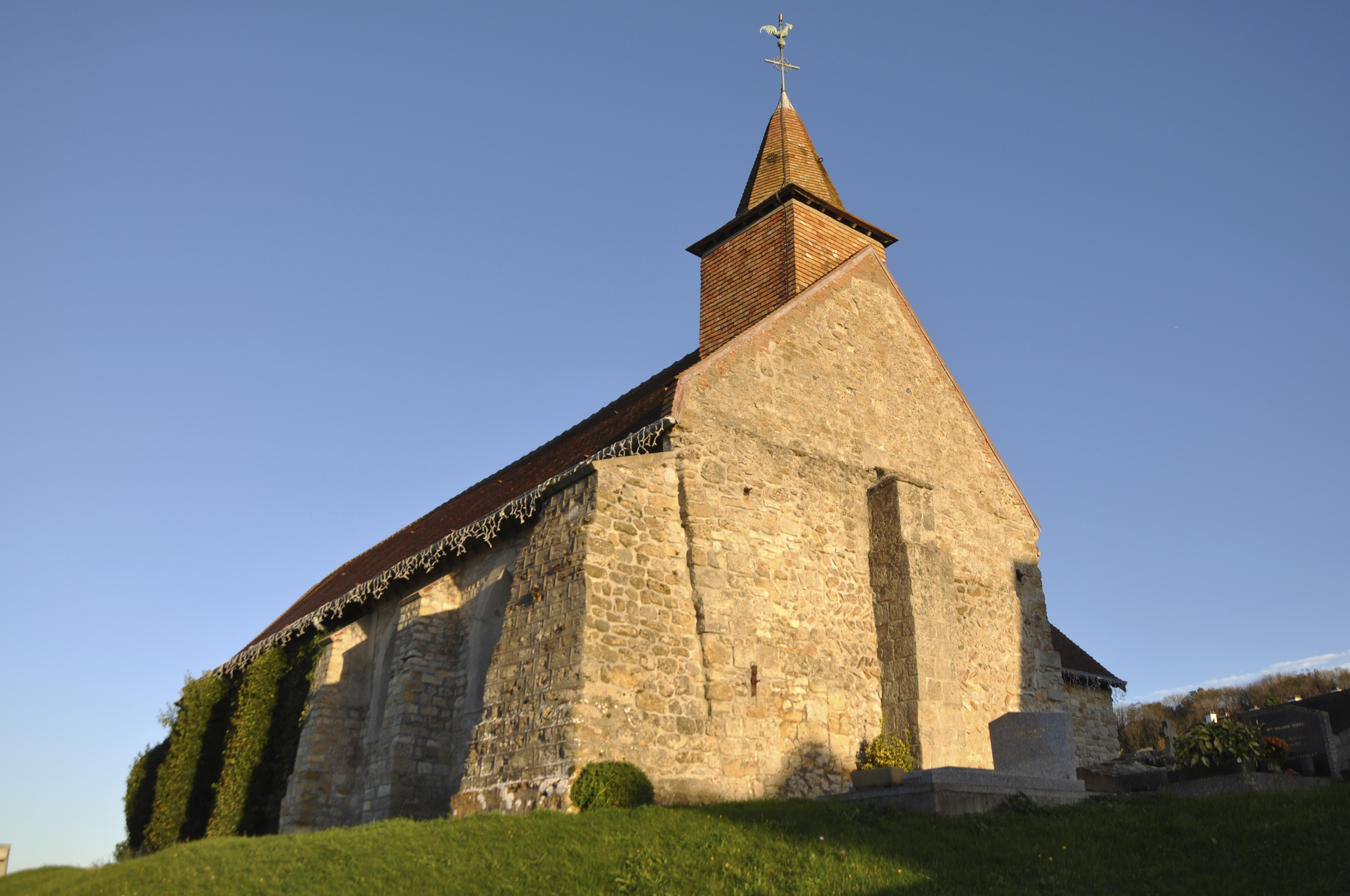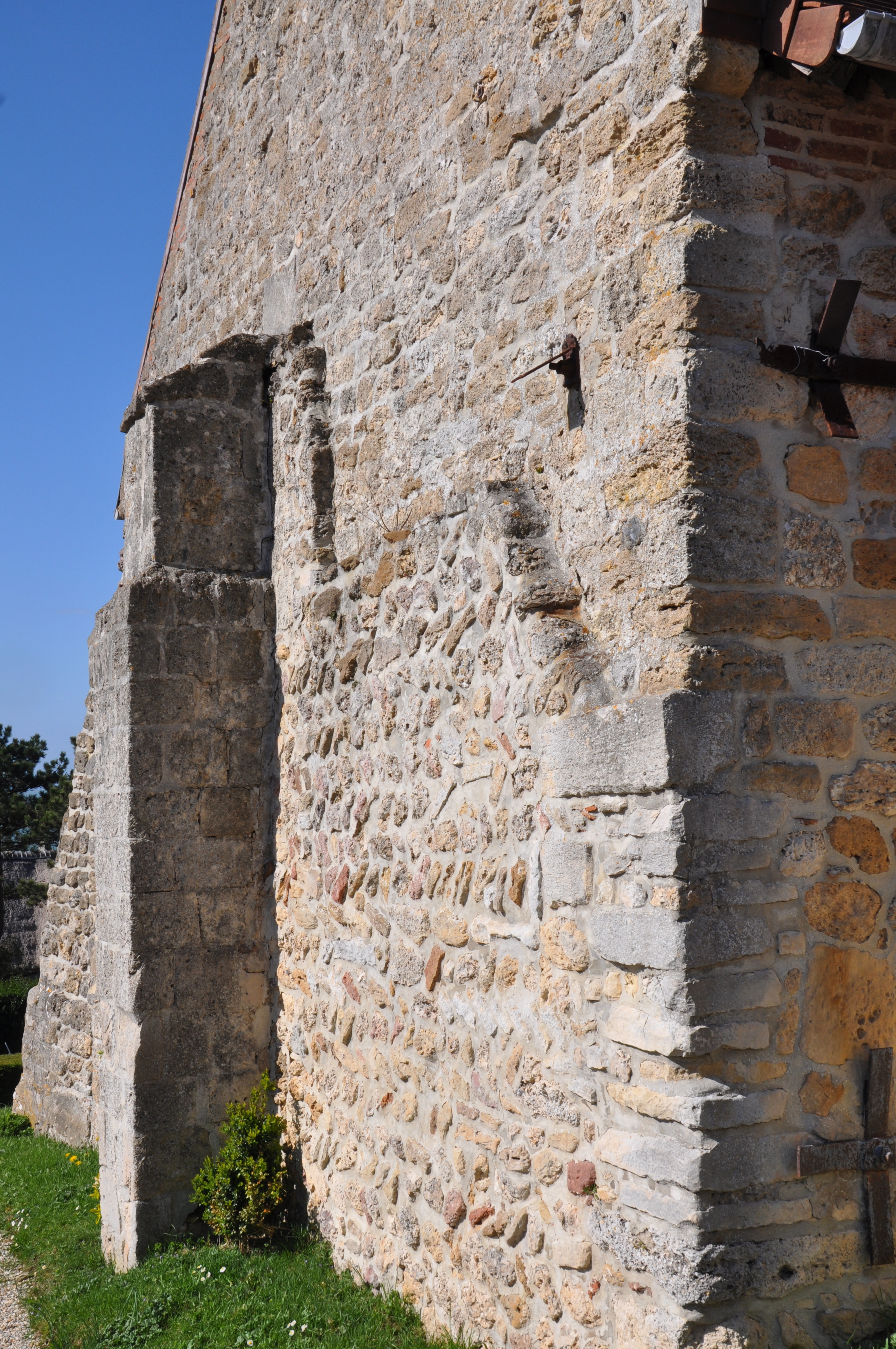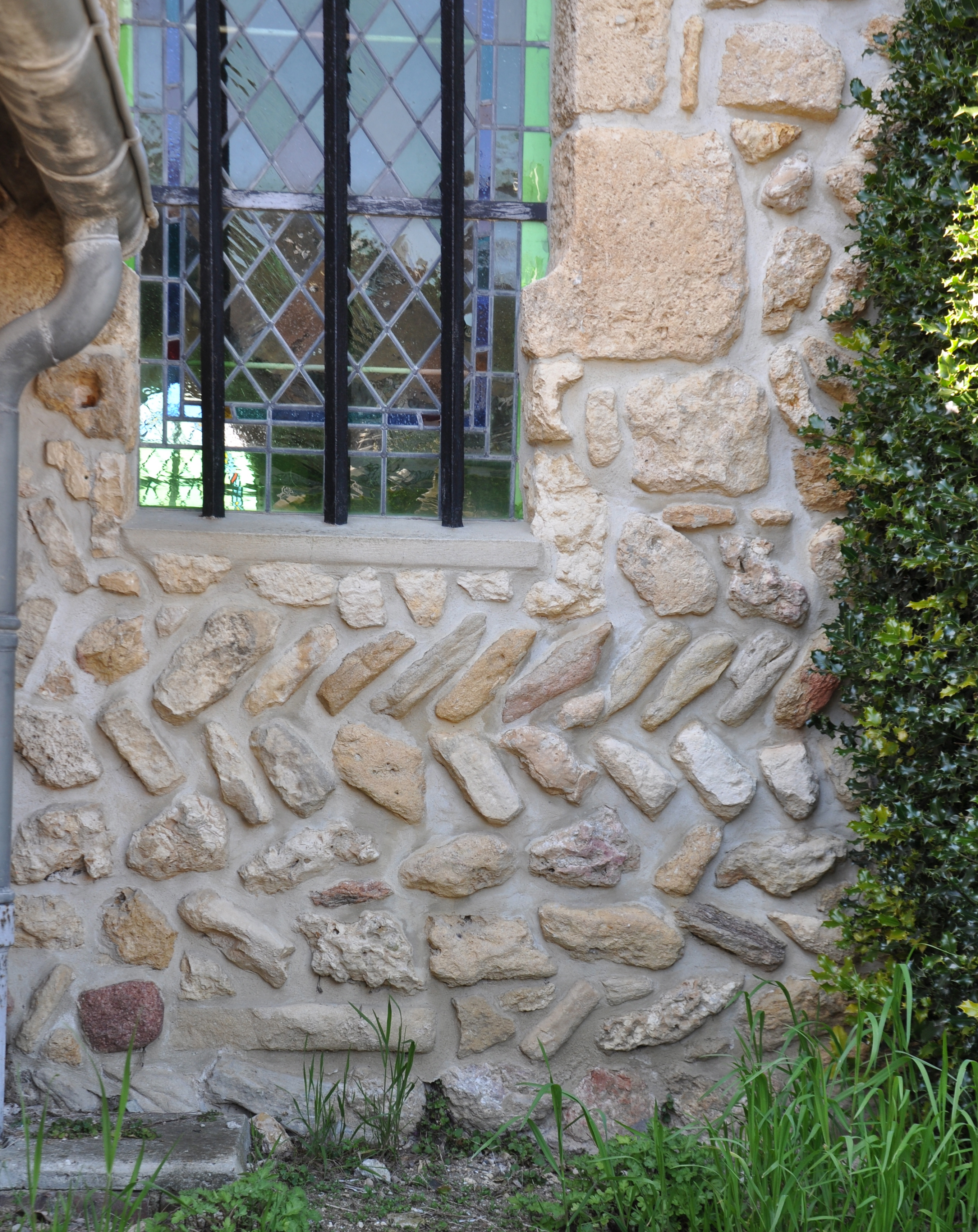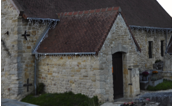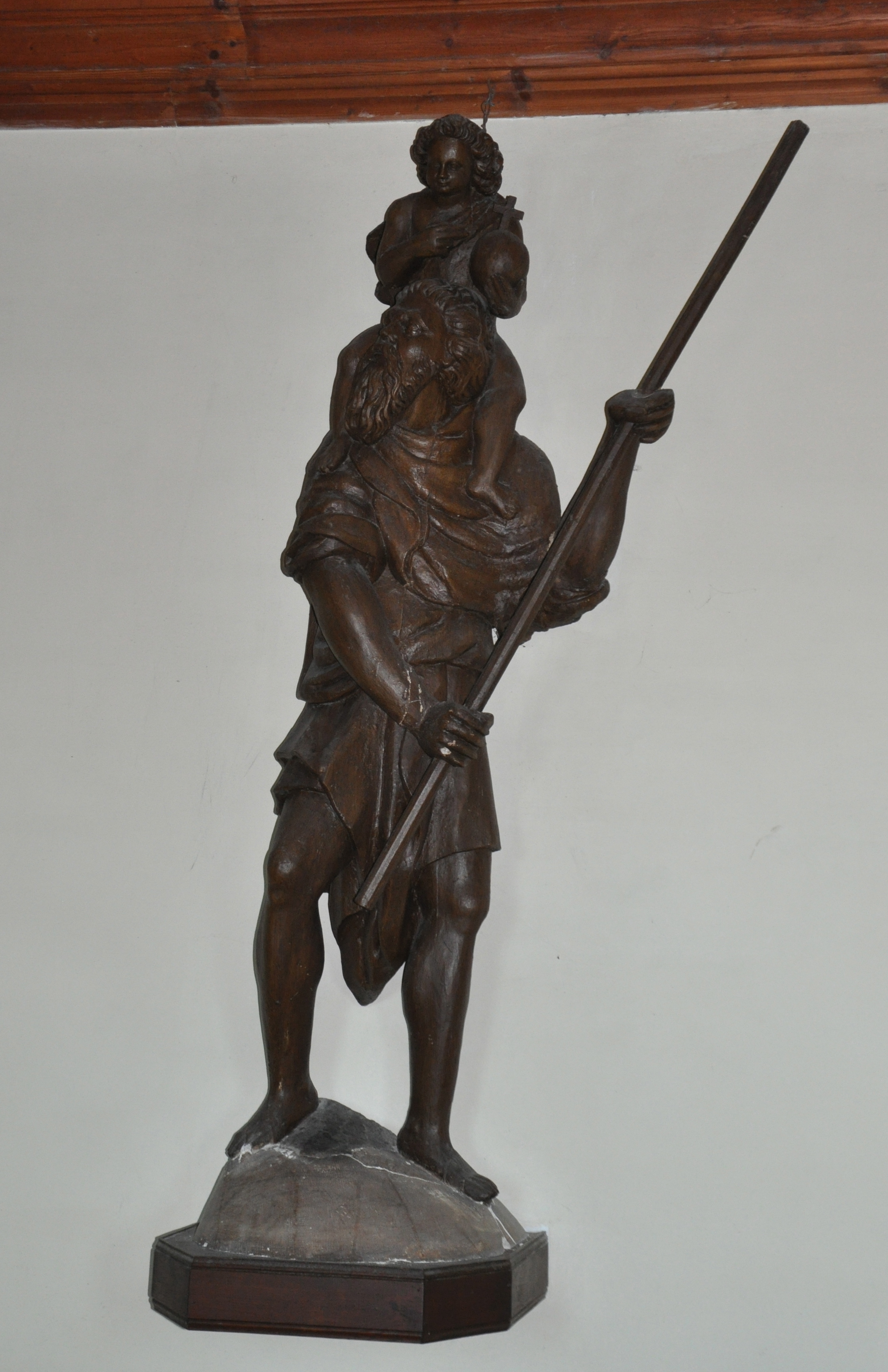St. Christopher church in Bénerville-sur-Mer.
Located in Bénerville-sur-Mer, the small parish church (25 meters in length and 9 meters wide), dedicated to the Virgin Mary, is named for St. Christopher.
According to a legend that no research onsite has been able to confirm or deny, it is said that long ago a chapel dedicated to St. Christopher existed along with a parish church located at the farthest point of land in the salt marshes, between the Touques Estuary and the Bénerville point and was submerged by the sea. The name Notre Dame was then given to the chapel which was repaired and enlarged to serve as parish church. Traces of the original chapel wall are still visible today along the west wall.
The exact date when Notre Dame church disappeared is not known, but estimates suggest late in the sixteenth century. It should be further noted that the building did not appear on any map of the time. Only St. Christopher was mentioned.

17th, Justus Dankers,
Learn more : "remontez le temps"
It appears as well that the remarkable site where St. Christopher is situated today saw much earlier activity. In July 1873, during construction of the coastal road between Deauville and Villers-sur-Mer three sarcophages made from regional stone (Caen stone) were uncovered. Unearthed as well were two iron sabres and various small objects. Descriptions of these appeared in the publications of the Antique Dealers Society in Normandy.
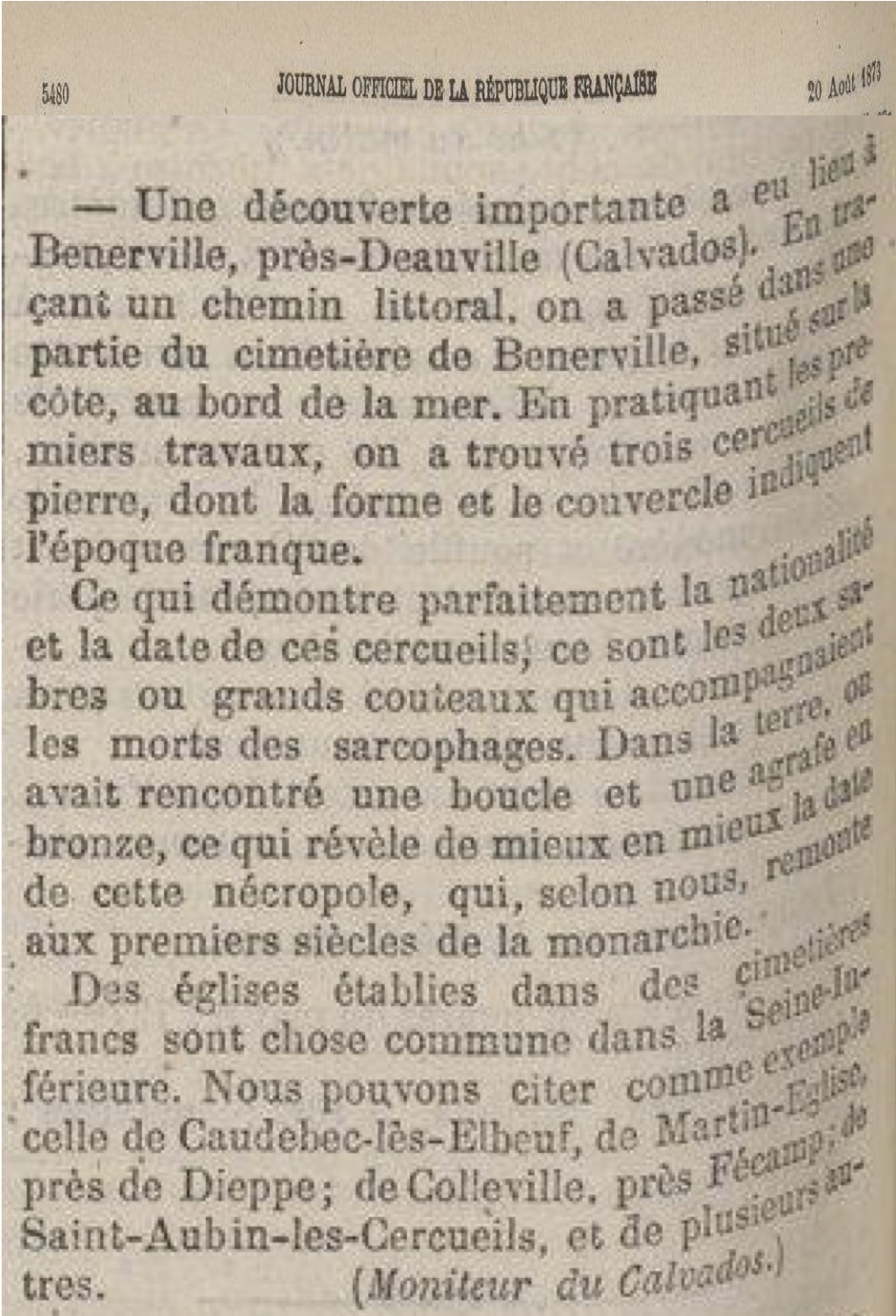
Journal Officiel de la République Française du 20 août 1873
The presence in numerous places around the edifice of the remnants of opus spicatum work makes it possible to date the site from the eleventh century. Other churches or chapels in the vicinity from that same period add credibility to this assumption.
The opus spicatum is made with with bricks or flat stones set on their sides at angles and arranged alternately.
The edifice comprises a central nave, with an apse (A) at one end. A short spire shaped as an octagon graces a small squared off bell tower. A pyramid base supports the spire, which rests on the roof of the nave.
As is the case with every religious structure dating from the late Middle Ages, the church has a specific orientation. Indeed, this orientation is to be taken literally, with the nave housing the choir on the east side, toward the rising sun, which symbolizes the resurrection of Christ.
It was important to respect an east/west orientation. This resulted in building on steep terrain, parallel to the bottom of the slope. The north wall is supported by four buttresses (1, 2, 3, 4), reinforced by underpinning on the northwest (5). The foundation of underpinning is finished off on the west wall by a buttress shouldered with two sloping ledges (6). On the east side the window in the nave was blocked off by a central buttress (7), which lends its support to the three previously existing ones (8, 9, 10).
The structure underwent numerous modifications over the centuries. On the south wall a sacristy (5) and a covered porch were added on and two openings for windows were fashioned on the north wall.
The interior of the church also underwent numerous transformations. All the walls were covered with a layer of cement and white paint.
A ceiling in the shape of the hull of a boat and made from varnished pine boards overlooks the nave, and the vaulted ceiling of the choir seems to have retained its fifteenth-century structure, however it has been covered with varnished pine.
One of the most remarkable aspects is the triumphal arch between the nave and the choir—especially the two slim columns. To the right (Xa) only the column itself remains, sculpted with diamond-shaped ribbons and crosses. To the left (Xb) the column has retained its capital, depicting a rather expressive face. A second head is found on the side turned toward the wall, leaving one to reflect upon the likelihood that the tow columsn had been taken from another location and repurposed.
All of the furnishings have been photographed and catalogued. Most notably are the following:
A statue of St. Christopher, listed among the Objects of Historic Monuments, recalls the legend of the one who carried the infant Christ on his shoulders across a river, making him the patron saint of travelers. St. Christopher has been honored every July since 1850 by the town of Bénerville, which holds an open air mass and a blessing of the cars, as well as an informal social dance and fireworks.
Another statue depicts the Virgin, standing and ecstatic. The statue, in all likelihood, had been found nearby, washed ashore. . . .
Text : Catherine Hueber-Fonné
Translation : Pierre Madon
Church floor plan: E. Hamon
Capital drawing: R. Verbauwhede
Pictures: D. Fonné
